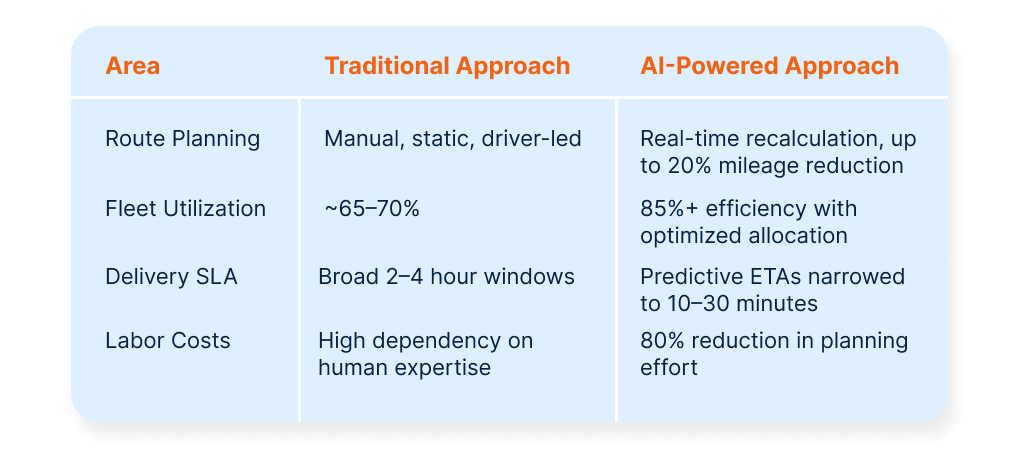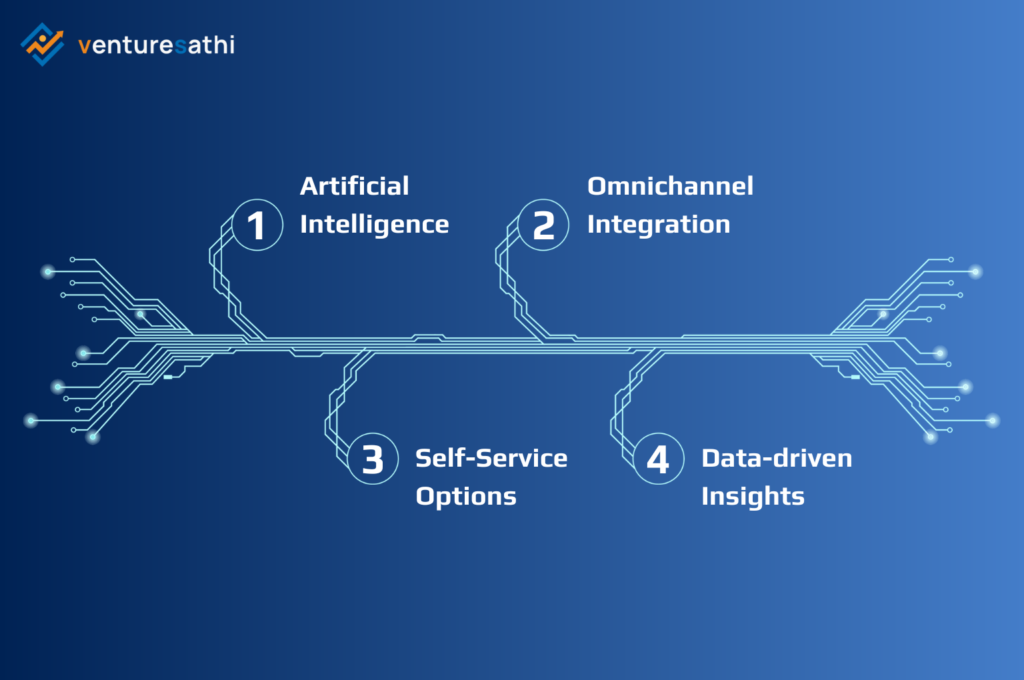AI-Powered Last Mile Delivery
Transforming Quick Commerce Logistics
Author

Rohit Gupta
Chief Operating Officer
Why Last Mile Delivery Matters More Than Ever
The last mile of delivery, the final leg between a warehouse and the customer’s doorstep has become one of the most critical and expensive parts of the supply chain. Studies show that this stage accounts for over 50% of total logistics costs.
In Quick Commerce (Q-Commerce), where delivery windows are measured in minutes rather than hours, last mile performance directly impacts customer loyalty, brand trust, and profitability.
Companies that once relied on manual planning and driver intuition are now facing a high-stakes challenge:
- How do you deliver faster at scale?
- How do you keep costs under control while meeting increasing expectations?
The answer lies in AI-powered logistics systems that transform delivery networks from static and reactive to predictive and self-optimizing.

The Shift from Manual Planning to AI-Powered Logistics
Traditional delivery planning relied heavily on spreadsheets, experience, and manual dispatching. While effective for small-scale operations, this approach doesn’t scale in the on-demand Q-Commerce environment.
AI changes the game by analyzing millions of real-time data points—traffic conditions, weather, driver availability, road closures, and customer time windows—to create dynamic delivery routes that adjust automatically.
With AI-driven logistics, companies can:
- Reduce mileage by up to 20%.
- Improve fleet utilization to 85% or more.
- Deliver precise ETAs to customers.
- Predict and mitigate delays before they occur.
Table Of Contents
- Why Last Mile Delivery Matters More Than Ever
- The Shift from Manual Planning to AI-Powered Logistics
- Smarter Route Optimization for On-Demand Delivery
- AI Load Planning: Small Changes, Big Impact
- Smarter Route Optimization for On-Demand Delivery
- AI Load Planning: Small Changes, Big Impact
- Comparing Traditional vs. AI-Optimized Delivery Networks
- The Future of AI-Driven Logistics
- Final Takeaway
Smarter Route Optimization for On-Demand Delivery
AI route optimization tools work like a digital dispatcher, continuously recalculating the best delivery paths based on changing conditions. This creates a system that is faster, smarter, and more reliable than traditional planning.
For Q-Commerce companies, this means:
- Lower operational costs through reduced travel time and fuel use.
- Ability to serve more orders per driver in less time.
- Improved SLA compliance, keeping customer trust intact.
AI Load Planning: Small Changes, Big Impact
Efficiency doesn’t stop at route planning; it starts at the warehouse. AI-driven 3D load optimization algorithms ensure every delivery vehicle is packed with precision.
These tools help companies:
- Maximize space utilization to cut down on trips and fuel costs.
- Balance vehicle weight for improved safety and reduced maintenance.
- Save hours of manual trial-and-error stacking in warehouses.
Even a 5% improvement in vehicle load efficiency can translate into millions in annual savings for large-scale operations.

Smarter Route Optimization for On-Demand Delivery
AI route optimization tools work like a digital dispatcher, continuously recalculating the best delivery paths based on changing conditions. This creates a system that is faster, smarter, and more reliable than traditional planning.
For Q-Commerce companies, this means:
- Lower operational costs through reduced travel time and fuel use.
- Ability to serve more orders per driver in less time.
- Improved SLA compliance, keeping customer trust intact.
AI Load Planning: Small Changes, Big Impact
Efficiency doesn’t stop at route planning; it starts at the warehouse. AI-driven 3D load optimization algorithms ensure every delivery vehicle is packed with precision.
These tools help companies:
- Maximize space utilization to cut down on trips and fuel costs.
- Balance vehicle weight for improved safety and reduced maintenance.
- Save hours of manual trial-and-error stacking in warehouses.
Even a 5% improvement in vehicle load efficiency can translate into millions in annual savings for large-scale operations.
Comparing Traditional vs. AI-Optimized Delivery Networks

The Future of AI-Driven Logistics
The logistics industry is rapidly moving toward autonomous and predictive systems:
- Self-driving delivery vehicles guided by AI-generated routes.
- Drone and robot deliveries for hyperlocal and urban areas.
- Predictive inventory placement so products are already near the customer when ordered.
In this future, last mile delivery isn’t just a step in logistics—it becomes a key differentiator of customer experience.
Frequently Asked Questions
Final Takeaway
AI isn’t just optimizing delivery operations, it’s redefining the logistics industry. For Q-Commerce companies, adopting AI-powered solutions for routing, load planning, and demand forecasting is no longer optional.
Those who embrace automation and predictive logistics now will build delivery networks that are faster, smarter, and more profitable. Those who wait risk falling behind in an industry where customer expectations only move in one direction: faster.


